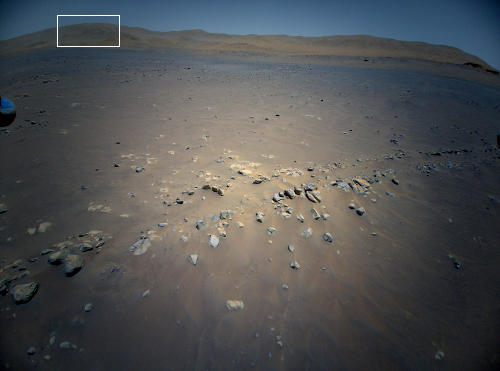Superheavy prototype #4 rolls to orbital launchpad


Click for live stream.
Capitalism in space: SpaceX today rolled its 4th Superheavy prototype from its assembly building in Boca Chica, Texas, moving it to the orbital launchpad in preparation for having the 20th Starship prototype stacked on top and assembled for the rocket’s first orbital test flight.
The first image to the right is a screen capture taken from a short movie posted in an Elon Musk tweet. It shows the base of this Superheavy, with its 29 Raptor engines. The engines appear surrounded by the support structure that holds the stage to the truck mover.
The second image to the right is a screen capture from Labpadre’s live stream Saphire camera, captured shortly before this post was published. Superheavy is 230 feet tall. Starship is 165 feet tall. Combined that equals just under 400 feet, which is still about 30 feet taller than the Saturn-5.
Yet, Superheavy is easily dwarfed by the launch tower behind it, and when they stack Starship on top the combined rocket will still be only three quarters as tall as the tower. They are using that tower not only for launches, but for stacking of Starship as well as a capture devise for when later Superheavies return to Earth. Instead of having landing legs, Superheavy will eventually lower itself into position next to the tower and hover there so that the tower can grab it.
All this means the tower needs to be taller than the combined rocket. I would also expect that a second tower will be necessary eventually for that landing grab.
Before they stack Starship #20 on top they will likely do pressure and tank tests of Superheavy, and maybe a few dress rehearsal countdowns leading to short static fire tests.
It still appears to me that we are looking for an orbital test flight sometime in late September, early October.


Click for live stream.
Capitalism in space: SpaceX today rolled its 4th Superheavy prototype from its assembly building in Boca Chica, Texas, moving it to the orbital launchpad in preparation for having the 20th Starship prototype stacked on top and assembled for the rocket’s first orbital test flight.
The first image to the right is a screen capture taken from a short movie posted in an Elon Musk tweet. It shows the base of this Superheavy, with its 29 Raptor engines. The engines appear surrounded by the support structure that holds the stage to the truck mover.
The second image to the right is a screen capture from Labpadre’s live stream Saphire camera, captured shortly before this post was published. Superheavy is 230 feet tall. Starship is 165 feet tall. Combined that equals just under 400 feet, which is still about 30 feet taller than the Saturn-5.
Yet, Superheavy is easily dwarfed by the launch tower behind it, and when they stack Starship on top the combined rocket will still be only three quarters as tall as the tower. They are using that tower not only for launches, but for stacking of Starship as well as a capture devise for when later Superheavies return to Earth. Instead of having landing legs, Superheavy will eventually lower itself into position next to the tower and hover there so that the tower can grab it.
All this means the tower needs to be taller than the combined rocket. I would also expect that a second tower will be necessary eventually for that landing grab.
Before they stack Starship #20 on top they will likely do pressure and tank tests of Superheavy, and maybe a few dress rehearsal countdowns leading to short static fire tests.
It still appears to me that we are looking for an orbital test flight sometime in late September, early October.













